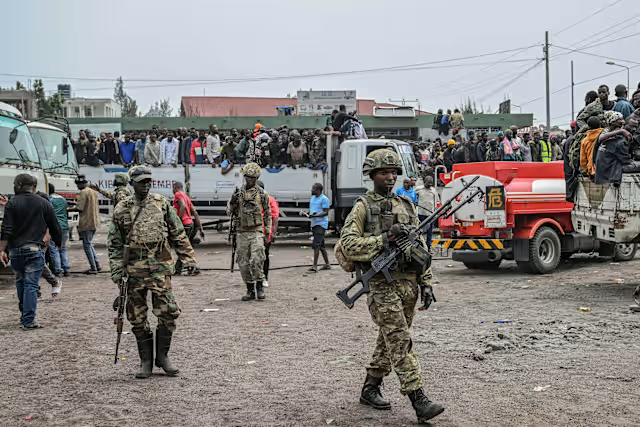News & Politics
Trump’s “America First” Health Aid Strategy: What You Should Know
The US State Department is preparing a sharp reorientation of how Washington funds global health, with a new “America First” strategy that prioritizes bilateral agreements with enforceable terms over the open-ended aid frameworks of the past. Internally framed as a push to align health spending with national interests, the plan represents a decisive break from […]
By
Alex Omenye
3 months ago
The US State Department is preparing a sharp reorientation of how Washington funds global health, with a new “America First” strategy that prioritizes bilateral agreements with enforceable terms over the open-ended aid frameworks of the past. Internally framed as a push to align health spending with national interests, the plan represents a decisive break from decades of bipartisan support for expansive, often multilateral programs such as the President’s Emergency Plan for AIDS Relief (PEPFAR).
At the heart of this shift is a new logic of conditionality. The Trump administration argues that past international aid created a “culture of dependency.” The new approach is designed to push countries toward self-sufficiency and “long-term country ownership” of public health systems. Instead of the US underwriting large portions of health infrastructure worldwide, the Trump administration wants partner governments to commit to cost-sharing and to gradually assume greater responsibility for their own healthcare systems. For the next fiscal year, the US has pledged to continue covering frontline costs, including the salaries of health workers, but beyond that, countries will be expected to carry a greater share of the burden. Aid will not only be humanitarian, but explicitly transactional, with benefits tied to the degree to which a country is considered an ally or strategically important to Washington.
Beneficiaries And Losers
The clear winners in this new system are countries that align closely with US diplomatic and security priorities. The Western Hemisphere and the Asia-Pacific region will see expanded commitments, with the Philippines singled out for a $250 million investment. These nations will benefit from more targeted health spending, bespoke strategies tailored to local disease metrics, and closer integration of aid into broader foreign policy relationships. For them, “America First” could mean more predictable support, so long as they remain strategically valuable partners.
Africa, historically the largest recipient of US health funding and home to PEPFAR’s most visible successes, is set to face significant cuts. Washington has already proposed reducing overall global health spending from $10 billion in fiscal year 2024 to around $4 billion in 2026. Even if Africa remains nominally “a focus,” the scale of the reductions will fragment and destabilize funding, with ripple effects across HIV/AIDS programs, malaria control, and epidemic preparedness. The approach also sidelines multilateral institutions such as the Africa CDC, which are designed to respond to cross-border threats. Critics argue that privileging bilateral deals may weaken global capacity to confront pandemics that do not respect national boundaries.
What’s Next?
The strategy will be introduced formally at the United Nations General Assembly, which is being held this week in New York, where the US hopes to begin brokering the first bilateral agreements. For some, this marks a pragmatic recalibration that places responsibility on partner nations. For others, it is an abdication of leadership by the world’s largest historical donor to global health. Either way, the “America First” plan signals that US health aid will no longer be treated as an open-ended moral obligation but as a negotiation, one in which America’s partners must demonstrate both need and geopolitical value.
That shift inevitably creates space for other powers, chief among them China. Beijing has steadily expanded its health diplomacy through vaccine provision, hospital construction, and medical training programs across Africa, Latin America, and Southeast Asia. If US commitments shrink, China is well-positioned to present itself as the more reliable partner, thereby deepening its influence in regions where Washington once held dominance. The Trump administration’s recalibration may, in the short term, reduce American spending abroad, but in the long run, it risks ceding ground in a global competition where health aid becomes a lever of soft power.

